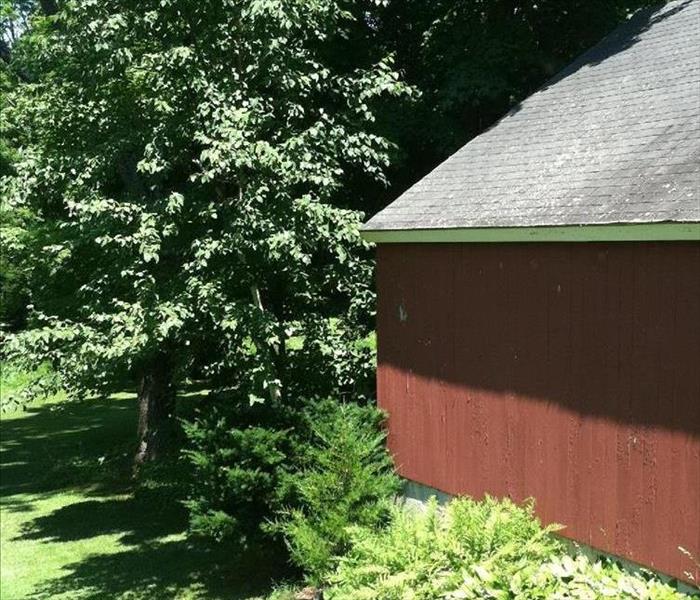How To Know If Your Tree Is Dying
8/4/2020 (Permalink)
Trees are valuable assets to any landscape, providing lovely and restful aesthetics as well as shade for wildlife and other plants. Sometimes it’s obvious when a tree is dying; its leaves turn brown in the summer or its branches are riddled with holes from pests. Sometimes, however, it’s not at all clear when a tree is in poor health. A dead or dying tree located near a building or home can be dangerous since broken limbs can cause injuries to people and pets and can lead to costly repairs if they land on your building or vehicle, so it’s vital for a home or business owner to recognize the signs of a dying tree to avoid costly and dangerous accidents.
Here are some signs that you may have a dying tree so you can take care of it before it does damage to your property.
BARK. The bark of a dying tree becomes loose and starts to fall off, and it may also have vertical cracks or missing bark. You will want to keep an eye out for deep splits in the bark that extend into the wood of the tree since such cracks often create weaknesses that can cause damage in storms or other weather events.
LEAVES AND BRANCHES. Look for branches without lush green leaves on your deciduous trees, and those that have only brown and brittle leaves during the growing season. They may also have dead leaves still hanging on well into the winter instead of dropping to the ground. When it comes to evergreens, these types of trees will have red, brown, or yellow needles or leaves when they are stressed or dying.
PESTS. Pests - such as bark beetles and carpenter ants - prefer trees that are under stress or are in the process of dying. Also, fungal or bacterial infections are more common in dying trees as well, so make sure to pay attention to mushrooms growing on the ground at the base of a tree or on the tree itself. Their presence is a possible indication that you have rot in the roots or trunk of the tree, and such decay can then extend further into the tree’s interior, leading to structural issues in the future.
ROOTS. Determining root damage isn’t always easy. If your tree has a shallow and/or partially exposed root system, pay attention to changes that might suggest exposure to extreme elements or if poor soil compaction have affected the vitality of its roots, such as thinning foliage, poor yearly growth, yellow undersized leaves, dead branches, and wilted brown leaves during the growing season.
Your SERVPRO of Belle Meade/West Nashville team is here to help you with all of the challenges that can come from home or business ownership. We can handle fire damage, water damage, and mold remediation, and we’re committed to getting your property Certified: SERVPRO Cleaned!






 24/7 Emergency Service
24/7 Emergency Service
